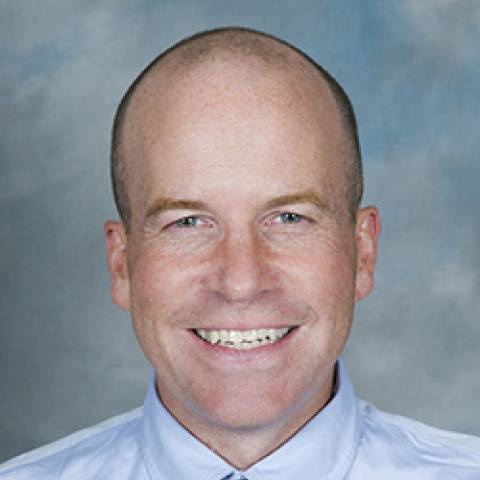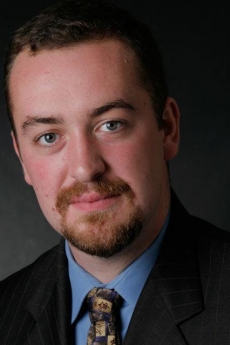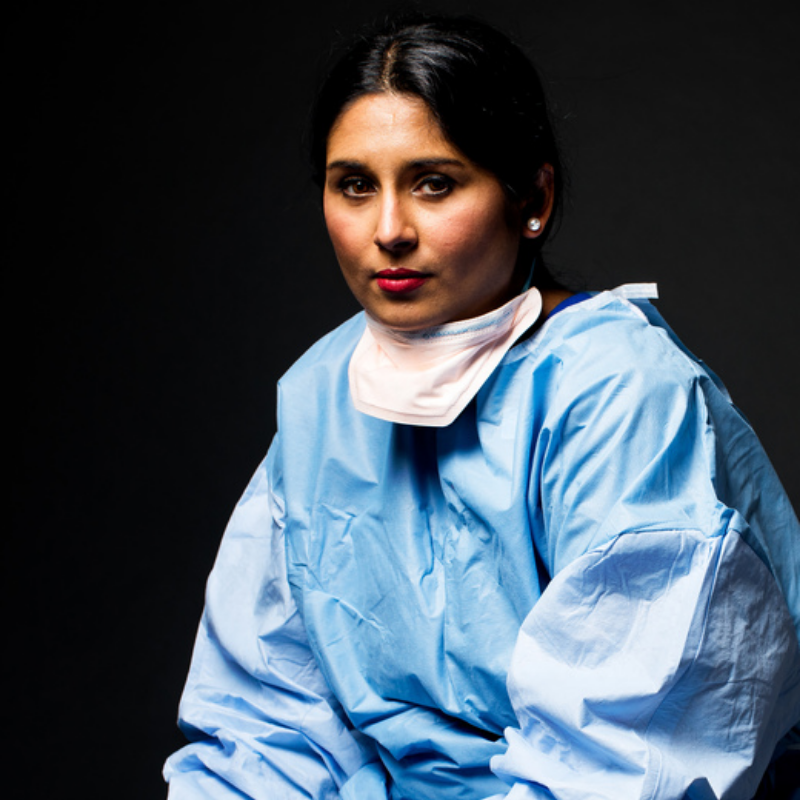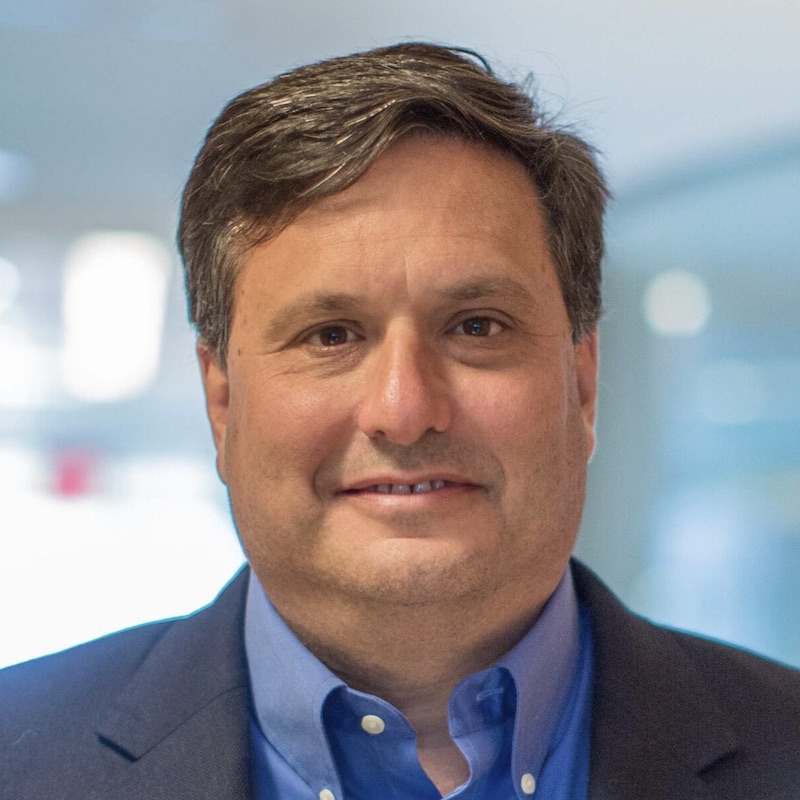S1E17: Getting Prepared / John Lynch, Syra Madad, Reid Wilson
“We want to make sure everybody’s prepared because we know COVID 19 is just one epidemic that we’re currently facing. There’s going to be another one in the pipeline, and we need to make sure that we’re investing today for tomorrow.” – Syra Madad
In today’s episode, co-hosts Dr. Celine Gounder and Ron Klain speak with Syra Madad, Senior Director of the Special Pathogens Program, New York City Health and Hospitals. Syra shares her experience preparing for a potential disease outbreak like SARS in New York City, and how this preparation helped to lay the foundation for healthcare professionals in New York during the COVID pandemic. They also talk about Syra’s personal experience being diagnosed with COVID while living in a home with small children and at-risk persons. Dr. Gounder and Ron Klain also talk to Dr. John Lynch, Medical Director for Infection Control at Harborview Medical Center in Seattle. They discuss how Washington, the state with the first confirmed case of COVID in the US, took action through house assessments to test as many people as possible with COVID symptoms, and how this process changed once community spread began to widely take place. Finally, they speak with Reid Wilson, a reporter with The Hill. They talk about how the epicenter of the coronavirus is making its way from large cities, such as Seattle and New York City, to more rural areas of the US, including Native American reservations, and why this is worrisome. They also discuss how, even as some states begin reopening, many Americans do not feel like they are ready to return to normal life.
This podcast was created by Just Human Productions. We’re powered and distributed by Simplecast. We’re supported, in part, by listeners like you.
Celine Gounder: I’m Dr. Celine Gounder.
Ron Klain: And I’m Ron Klain.
Celine Gounder: And this is “Epidemic.”
Ron Klain: Today is Tuesday, May 5th. In this episode, we’re going to hear from two infectious disease specialists who were responsible for preparing hospitals in two of the cities that had been hit hardest and earliest by the coronavirus, Seattle and New York City.
Celine Gounder: We’ll also hear from a journalist who’s been digging into what’s happening in the interior of the country, to which the epicenter of transmission is shifting.
Ron Klain: Dr. Syra Madad is senior director of the Special Pathogens Program for New York City Health and Hospitals. Health and Hospitals oversees New York City’s 11 public hospitals. A big part of Syra’s job has been thinking about the next big threat, and what it would be like if New York City faced such a threat from infectious disease. And, about a year ago, she was thinking about SARs and what it would happen if a virus like that came to New York City.
So they put together a simulation. Part of that exercise was captured in the Netflix documentary Pandemic: How to Prevent an Outbreak.
Syra Madad: We had a number of emergency department doctors, respiratory therapists, nurses, you know, technicians and things like that all kind of come together. And we set up a scenario, whereas, you know, it’s an unknown novel, respiratory virus circulating around the world. Handful of countries. This is going to be a scenario where you have a number of patients, you have healthcare workers coming in here at one of our hospitals, ED is full. There’s about eight of them in this trailer. So this is a sort of trailer on wheels, that’s completely like an emergency department if you walk in.
Celine Gounder: They wanted to see how clinicians would react in an unknown scenario. How they’d handle protocols around infection control and personal protective equipment. How’d they’d handle a surge of patients with little to no information about the virus.
Syra Madad: And unfortunately, this is essentially exactly what we’re experiencing today with coronavirus disease.
Celine Gounder: In this episode, we’re going to hear from experts like Syra Madad and others about the importance of hospital preparedness for epidemics.
Ron Klain: We’re going to hear how the simulations, like the one Syra described, lay the foundation for healthcare professionals to take action when a pandemic strikes. And we’ll look at some parts of our country that haven’t had the benefit of these simulations, places like rural America, small-town America, and see what they’re going to be facing as the pandemic spreads.
Now, Syra Madad knows how scary COVID is firsthand. She’s already had it.
Syra Madad: That’s right. I contracted COVID probably about three and a half weeks ago, and I lost my sense of taste and smell. Yesterday was the first day where I was able to enjoy a cup of coffee and actually be able to taste and smell it.
Ron Klain: On top of that, she recently gave birth to her third child.
Syra Madad: So my baby girl is now three months old. I have two boys, six and four. And so, um, when I was diagnosed with COVID, certainly, you know, a scary moment, making sure that knowing you have little kids at home. I also have my husband’s parents, both high risk individuals. And so just trying to quarantine myself, but I was also breastfeeding my baby girl at that time.
So when I started coming out with my signs and symptoms, I was wearing a mask and gloves. And then, once I actually started to have, you know, a little bit more, uh, kind of a high fever, I quarantined myself for a period of time, and kind of did the best that I could. But it was certainly a scary time, and luckily, everybody in my household recovered, and we’re all doing fine.
Celine Gounder: Dealing with a virus that’s so contagious you have to wear masks and gloves in your own home while you’re caring for your child, that really hits home how important PPE is in this pandemic. And it was something the simulation showed, too.
Syra Madad: Really making sure that we have good infection control and that we have different milestones or markers to see, okay, doing a quick PPE check. Am I soiled, am I contaminated, what do I have to take off right now?
The lessons learned that we had in that simulation has really helped in our response and strategy to COVID-19.
Celine Gounder: Also how important a clear chain of command was. Their simulation showed that strangers could work well together, as long as everyone knew their roles.
Ron Klain: These same lessons, from an interpersonal level, translate to institutions as well. That means setting up an emergency management structure immediately, assigning specific roles, making sure logistics and supply chains are in order, and involving everyone, from the largest hospitals, to the smallest community clinics that may see COVID cases.
Syra Madad: We actually started tracking COVID-19 when the first report hit Pro-Med, in terms of, you know, this, uh, this cluster of pneumonia, of unknown ideology. Very early in January, I put together the first meeting with a number of our leadership to talk about, you know, this is something that is very concerning, and we need to start preparing for it, cause it will eventually come to New York City. We know time is not on our side, and we need to make sure that we always act fast and efficiently in order to respond as fast as we can, and obviously, to make sure that we’re saving as many lives as possible.
Celine Gounder: But this is where New York ran into trouble. Despite all the lessons learned from simulations and other best practices, the city didn’t act quite quickly enough. Just a couple days can make a big difference with a virus that spreads exponentially.
Ron Klain: Meanwhile, on the other side of the country, in Seattle, another team was facing their own coronavirus crisis. The first patient in the United States diagnosed with COVID-19 was in Washington, just north of Seattle, on January the 19th.
John Lynch: I think up to that point, we’d been looking a lot at an epidemic that was happening someplace else. And I think that day, it was basically just a clear and honest recognition that the containment strategies weren’t working.
Celine Gounder: This is Dr. John Lynch. He’s in charge of infection control at Harborview Medical Center in Seattle. John and I go way back. John was one of my seniors when I was an intern, back when we were both residents at Mass General in Boston.
How did that make you feel when you heard about that first case being diagnosed in your own backyard, basically?
John Lynch: Well, it, it felt like all the work that we’ve been doing over the past five or six years, I was grateful that we had it in place.
We had done a lot of work with our local public health jurisdiction. So public health Seattle, King County, Drs. Megan Kay and Jeff Duchin, who are amazing public health leaders. We had worked with them back in 2014 around this idea of a home assessment team.
Ron Klain: These home assessments were developed as a response to an Ebola outbreak. Basically, medical staff would suit up in PPE and assess potentially infected people in their homes to see if they had Ebola. It turned out not to be needed in that outbreak, but it proved to be great for tracing cases of COVID. After the first outbreak, there were at least 68 people who needed to be tested.
John Lynch: We have a team built up of nurses, infection prevention professionals and physicians. And they’ll say, “Hey, we have someone who was exposed or someone who traveled from this area, and now has symptoms that we’re sort of meeting a case definition for concern.”
We’d travel out in a team, usually of five people. It was a physician and a nurse who would be the two people who would go into the house, the hotel room or the apartment building. And we did all of those, high rises, regular houses. We would pull up to a site, basically build a donning area and a doffing area.
Ron Klain: Donning and doffing is a fancy way of saying, putting on and taking off your PPE. It’s complicated, and it has to be done right.
John Lynch: And we would have a site commander and basically an observation officer, who would monitor the actual donning and doffing of the PPE. And then usually a fifth person, who would just be a helper, and also in training.
We built up a really great team of people who can do this on weekends, at nights, during the days, during the weeks, to go out to people’s homes and get the samples done, get the samples to the laboratory and get the results back out to people, all in clear and constant communication with our public health colleagues.
Celine Gounder: I can tell you from experience that this is basically the same setup we used when I was working in Guinea during the Ebola outbreak.
John Lynch: This worked great, really up until we had a community outbreak here, until we started seeing a very large number of patients.
Celine Gounder: Once there was widespread transmission in the community, the team had to change course. Now they needed to prepare the hospitals for a surge of COVID patients.
Ron Klain: They set up an emergency command center. There were daily briefings. A lot of the same things that New York recommended after their simulations. They also canceled elective surgeries and moved to telemedicine to try to increase capacity at the hospital.
And Seattle had the equivalent of a secret weapon. Something that hospital systems all over America and other places did not have. Seattle had the ability to test for the virus.
John Lynch: We were very lucky that our clinical lab medicine colleagues were able to stand up a local test. So starting that Monday night, after learning about the outbreak, basically on Friday, we started testing everyone who admitted to our facility with respiratory symptoms, that Monday night, and it’s been going on since then. So we’ve had access to testing for patients. Shortly thereafter, we were able to get a drive-through clinic, like we’ve seen in many countries in Asia, stand up, in South Korea and other places. So it was lots of patient testing, lots of employee testing.
Celine Gounder: Another thing Harborview did was to communicate clearly and openly with staff about how COVID is transmitted and to make sure staff had the personal protective equipment they needed.
John Lynch: And I would say that here our nurses, our other unionized healthcare workers, have recognized that we’ve been transparent about the data. We’ve got their back in making sure it’s all accessible, that we have, you know, easy access to all the PPE they need. I don’t think they’ve ever felt desperate, like wearing an N95 for a week has never happened here. We’d been able to mitigate all that very, very early on because of paying attention to what we truly think is the biology and informing our PPE choices as a result.
Celine Gounder: Seattle was at the very beginning of the curve. John says that at their peak, they had about 120 patients, and it’s falling. When we spoke on May 1st, John said there were roughly 85 patients in their ICU.
John Lynch: The question now, is that going to continue to decrease, or is it gonna stabilize?
You know, we’re seeing states around the country, including, uh, soon here in Washington State, some relaxation of the physical distancing that’s going to be put into place, and we do not know whether we’re going to see cases go down, stabilize or go up. And until we have some of that experience, we are not going to be able to sort of decide what the true new normal is. But at the very least, it’s going to be lots of universal masking, lots of screening, lots of testing, uh, regular assessments of your healthcare workforce, and, ultimately, we’re going to need more people doing this work over time.
Ron Klain: So what is this going to look like when the virus starts to reach middle America? Reid Wilson is a reporter with The Hill.
Reid Wilson: This is a virus that started in epicenters, in, in my hometown of Seattle, and in New York City and the Bay area. And since then, it has been moving more and more into rural America, areas where the health system is a lot more vulnerable, where people tend to be older, where people tend to have more underlying conditions. So basically we’re just ripe for more disaster, more death.
Ron Klain: Reid knows a thing or two about epidemics. His book, “Epidemic: Ebola and the Global Scramble to Prevent the Next Killer Outbreak” is due out in paperback on May 12th. Reid says that next outbreak might be in rural states that so far avoided the worst of the COVID crisis.
Reid Wilson: The States that are seeing the highest percentage of growth are those rural states, Nebraska, Iowa, South Dakota. South Dakota is a fascinating case, you know, South Dakota has something like 1,800 cases, but a very small death rate, or their case fatality rate is under 1%. Well, that’s because all of these cases have just been diagnosed in the last couple of weeks. So their rate, their case fatality rate is going to rise as more and more people go through this virus.
Celine Gounder: One reason for this is that social distancing is difficult in rural areas, especially because of the economy. This is why meatpacking plants are now the latest hot spots for COVID.
Reid Wilson: Especially in places like Iowa, which is pretty heavily dependent on, on meatpacking facilities.
I was talking to an epidemiologist at the University of Iowa, and she was saying, all of the cases in Des Moines are in the Southwest corner of the city. Well, who lives there? The immigrants who work in those meat packing plants. These people are on lines, they’re not six feet away from each other, I’ll tell you that. And there have been even stories about people who are afraid to cough into their elbows, or to take the basic precautions that we need to take because, if they do, they might miss a chicken or, you know, whatever’s coming down the conveyor belt that they’re supposed to do something on, and therefore, they’ll get a demerit and they’ll, they risk losing their job.
Now, President Trump has ordered the meat packing plants to stay open to protect a food chain. That’s got a lot of people really worried that, basically, he’s sending people to work to guarantee that they’re going to get this virus.
Celine Gounder: Another rural population at risk for coronavirus is Native Americans living on reservations.
Reid Lynch: The Navajo Nation, in particular, has just been brutally hit. It’s case rate is up there with New York City at its worst.
It’s not just the Navajo Nation. There are pockets in, in South Dakota and Oklahoma. Wyoming’s only seen seven deaths from the coronavirus, but almost all of them are from the Northern Arapaho tribe.
Ron Klain: Reid says that Native American economies are also particularly vulnerable to COVID shocks. Things like natural resource extraction and casinos, for example, have both been very hard hit.
Reid Wilson: This is like a double whammy for the Native population.These are communities that are very tight knit. They are very likely to have multigenerational households, so, you know, you’re living with your, your kids and your grandparents and your parents all in the same place. And the health systems have undergone, you know, what, two centuries of underfunding. Native tribes, in a lot of their treaties with the American government, were promised, good housing and good health care. Well, you won’t be surprised to know that, we haven’t exactly fallen through on those promises.
Celine Gounder: Having spent time working at Indian Health Service Hospitals, including just outside the Navajo Nation, I can tell you that the living conditions can be tough. Many homes on the reservation don’t have running water or electricity. That can make things like hand washing really hard.
Despite the warning signs Reid mentioned, many of the first states to try to re-open their economies are rural states that haven’t yet seen large numbers of COVID. While cities like Detroit, Boston, and New York were seeing a surge in cases, many states in the South and Midwest wondered what the fuss was all about.
Reid Wilson: And I think that’s like totally understandable, right? That’s human nature. Well, this thing isn’t really coming to my community, so why am I locked down? Why have I lost my job? Why are all the businesses closed?
Ron Klain: These states, for better or worse, are going to be canaries in the coal mine when it comes to reopening early and the coronavirus.
Reid Wilson: There was a great poll out of North Carolina the other day that asked people if they reopened the economy, what are you going to do? And as it turns out, you know, fewer than a third are going to go to a restaurant, and only 9% would go to a movie theater and things like that. So Americans are clearly not ready to get back to normal, whatever our new normal is going to look like. So let’s watch these next three weeks. Somebody who ventures out today to a restaurant and gets infected, you know, they might not show up in the data for up to two weeks. So as we get to week two, week three, we’ll see how these sort of mini experiments and reopening are starting to go. If Georgia sees a new surge in cases, if Texas sees a surge in cases, well then, we’re going to have to lock down again. If they don’t, well then maybe, maybe we can safely reopen.
Celine Gounder: All these stories show how important it is to be prepared for an epidemic. But it takes resources and political will to support and maintain these programs, so that hospitals across the country are ready when they face an epidemic. Syra Madad again:
Syra Madad: When these programs exist, we need to make sure that they’re sustained. Yesterday was Ebola, today it’s COVID 19, tomorrow it could be something else. But unfortunately, the approach that we’ve always had, I think from the federal standpoint is, you’re funding these networks and systems for a short period of time, and then you’re not sustaining them.
Ron Klain: This is a persistent problem in public health. There’s even a specific name for it. It’s called the “u- shaped curve of concern.” It basically mean that governments throw resources at a problem when it’s at its worst, but as soon as they start to see improvements, the funding and the attention dries up.
Syra Madad: We need to make sure that, just because the disease itself may decline, due to public health interventions and the response that we have, both at the public health and health care delivery level, we need to continue funding these programs. And I think one of the key points is, when we talk about funding, the hospital service program that helps fund a lot of the resources and the training, and helps with readiness, that budget has been cut nearly in half from over $500 million in fiscal year 2003 to $265 million in fiscal year 2019. So that goes to show you, from a national standpoint, we’re not investing enough in preparedness. In fact, we’re constantly cutting, you know, the funding that is actually available at the local level for these programs, and this is where rubber meets the road. This is where it actually all counts, in terms of our preparedness, of being able to save as many lives as possible.
We want to make sure everybody’s prepared, because we know COVID 19 is just one epidemic that we’re currently facing. There’s going to be another one in the pipeline, and we need to make sure that we’re investing today for tomorrow.
Celine Gounder: “Epidemic” is brought to you by Just Human Productions. We’re powered and distributed by Simplecast.
Today’s episode was produced by Zach Dyer and me. Our music is by the Blue Dot Sessions. Our interns are Sonya Bharadwa, Annabel Chen, Isabel Ricke, and Claire Halverson.
If you enjoy the show, please tell a friend about it today. And if you haven’t already done so, leave us a review on Apple Podcasts. It helps more people find out about the show. You can learn more about this podcast, how to engage with us on social media, and how to support the podcast at epidemic.fm. That’s epidemic.fm. Just Human Productions is a 501(c)(3) non-profit organization, so your donations to support our podcasts are tax-deductible. Go to epidemic.fm to make a donation. We release “Epidemic” twice a week on Tuesdays and Fridays. But producing a podcast costs money, we’ve got to pay Zach. So please make a donation to help us keep this going.
Check out our sister podcast “American Diagnosis.” You can find it wherever you listen to podcasts or at americandiagnosis.fm. On “American Diagnosis,” we cover some of the biggest public health challenges affecting the nation today. In Season 1, we covered youth and mental health; in season 2, the opioid overdose crisis; and in season 3, gun violence in America.
I’m Dr. Celine Gounder.
Ron Klain: And I’m Ron Klain.
Celine Gounder: Thanks for listening to “Epidemic.”








